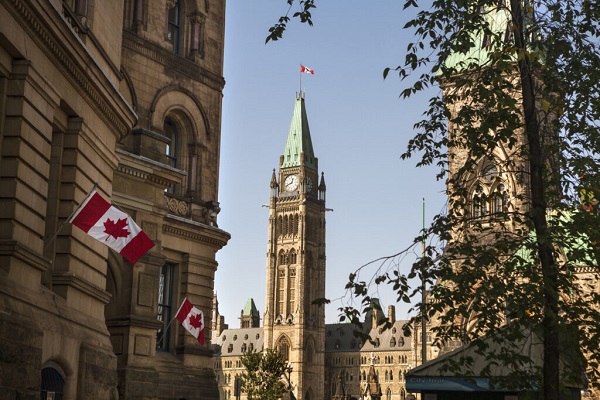David Clinton
Is Marriage the Strongest Predictor of Wealth in Canada?

Love, they say, is a many-splendored thing. But I can tell you with confidence that, in Canada at least, it also pays handsomely.
Sharp downward trends in fertility rates are pointing to a bleak future. And as we’re discovering, immigration isn’t necessarily going to save us. Working on the reasonable assumption that the high costs of raising kids were holding us back, governments have been working for decades to encourage childbirth through programs like the Canada Child Tax Benefit. Their hearts were in the right place, but the result haven’t been great.
The Audit is a reader-supported publication. To receive new posts and support my work, consider becoming a free or paid subscriber.
The child and family support programs have been significant. For example, the average total of government support transfers in inflation-adjusted dollars paid to single parents have grown from $11,600 in 1976 to $19,400 in 2022. That amounts to around 29 percent of their average total earned income. Benefits for couples with children nearly tripled from a 1976 average of $5,800 to $15,300 by 2022. Those transfers included child benefits, employment insurance benefits, and social assistance.
But it turns out that even without government programs, marriage and parenting are both financially rewarding endeavors. In 2022, According to Statistics Canada, the average individual “not in an economic family” earned just $53,400 from both market (i.e., earned) income and government support. That same year, couples earned $135,600 – an increase of around 51 percent over what they would have earned in 1976. And the average couple with children took $169,900 home. For comparison, single parents earned just $80,100.
Of course it’s possible that couples who happen to be wealthier are more likely consider themselves capable of raising children, so to some extent they’re self-selecting. And some singles feel unable to start families because of crazy housing costs. Nevertheless, it seems that marriage and, to a lesser degree, parenthood are important predictors of higher income.
Are government social support programs behind the imbalance? Not so much. The average couple in 2022 received $7,300 in benefits, but that’s significantly less than the $9,800 that the average singles (without kids) got. In fact, it’s also a lot less than the $10,400 childless couples would have received from the government in 1976.
It’s clearly earned income that’s driving the greater wealth of both couples as a whole and couples with children.
This isn’t a new development. Throughout the half century since 1976 – when you exclude government benefits – couples have out-earned singles by an average of 140 percent. And couples with children have earned an average of 12.5 percent more than couples in general.
The bottom line is that couples – both with and without children – earn significantly more than both single parents and singles living outside of a family unit. This economic reality has persisted through financial crises, evolving government policy standards, and social upheavals.
That knowledge could play a role in young peoples’ thinking as they plan their lives. But it’s also one of many reasons that we, as a society, should aggressively protect the integrity of the family as an institution. All things being equal, families lead to better outcomes.
This idea is something found in no less a source than the United Nation’s Universal Declaration of Human Rights (Article 16):
The family is the natural and fundamental group unit of society and is entitled to protection by society and the State.
There is something a bit strange about all this data that I can’t explain. between 1990 and 2004, the difference between total income of couples with children and total income of single parents was significantly greater than the years either before or since.
Many things happened in the early 90’s that might have triggered the growing disparity (like the introduction of the Canada Child Tax Benefit, increasing access to childcare, or a narrowing gender pay gap), but none of them suddenly stopped in 2004. And one could imagine similar social and policy changes that might have reduced the disparity after 2004 (like increased female workforce participation), but none of them really began in 2005.
That odd differential certainly looks real. But maybe it doesn’t mean anything. Sometimes a cigar is just a cigar. Any thoughts to share?
Subscribe to The Audit. If you already subscribe to the newsletter there’s more.. For the full experience, upgrade your subscription.
Thanks for considering The Audit. It also helps if you Refer a friend
COVID-19
Vaccines: Assessing Canada’s COVID Response


 David Clinton
David Clinton
I planned to be “first in line” for the shots as soon as my age cohort became eligible. By early March however, COVID itself dropped by the house, leading to the most uncomfortable (although non life-threatening) week of my life.
It’s been five years since COVID hit and one part of me wants to stuff it all in a closet somewhere and forget about it. But perhaps certain events – and especially government errors and overreach – should be documented. So this post will identify actions at all levels of government from those early days that, given our understanding of the threat available through the benefit hindsight, were both misguided and damaging.
I haven’t completely forgotten the mood through the early months in 2020. Politicians faced near-unanimous public demand for an aggressive response. Much of that sentiment was the result of messaging coming from foreign governments (mostly in the U.S.). But the local sentiment was definitely there.
To be fair, Governments got some things right and, taking into account the chaos and uncertainty of those early months, even some of their mistakes were understandable. But it’s the job of government to lead. And to avoid making choices – even popular choices – that will lead to predictable harms.
Vaccine mandates starting in 2021 were a case in point. Federal authority largely stemmed from the 2005 Quarantine Act and the Contraventions Act that allowed officials to issue tickets for non-compliance with the Quarantine Act. Provincial mandates were based on laws like Ontario’s Emergency Management and Civil Protection Act. The question isn’t whether the mandates and their enforcement were legal, but whether they caused more harm than good.
As the first vaccines started arriving in Canada around February 2021, I planned to be “first in line” for the shots as soon as my age cohort became eligible. By early March however, COVID itself dropped by the house, leading to the most uncomfortable (although non life-threatening) week of my life.
After recovering, my family doctor advised me to wait three months before getting the shots so my body could get back to normal. During those months, I got access to preprint results from the Israeli study into natural immunity which showed that:
Natural immunity confers longer lasting and stronger protection against infection, symptomatic disease and hospitalization caused by the Delta variant of SARS-CoV-2, compared to the BNT162b2 two-dose vaccine-induced immunity
Those results were later confirmed by CDC and NEJM studies, among others.
Given that context, I didn’t see any justification for exposing myself to even minimal health risks associated with vaccines. Which meant that, despite demonstrably posing no threat to public health, I would (at various times) be unable to:
- Board domestic commercial flights, VIA Rail, Rocky Mountaineer trains, and cruise ships within Canada
- Board international flights or trains departing Canada
- Freely return to Canada through an overland point of entry
- Upon return to Canada, bypass the 14 day quarantine under the Quarantine Act
- Upon return to Canada via air, bypass the three day quarantine in (expensive) government-approved hotels
- Engage in ‘non-essential” activities like restaurants, gyms, events (details varied from province to province)
- Enter Parliament
- Seek employment in federally regulated air, rail, and marine sectors
What should Canadian governments have done? Remove restrictions on individuals with natural immunity, obviously. Which, by the way, would have come with the valuable bonus of entirely avoiding the truckers protest and consequent confrontations.
If authorities were reluctant to take us at our word on immunity, they could have followed the European Union’s lead by emulating their Digital COVID Certificate for proof of recovery. Were they worried about people without immunity creating fake certificates? Hard to take that one seriously. There were more fake vaccine passports littering the streets of Ontario than abandoned Toronto Maple Leafs car window flags in a normal early May.
In the end, my own suffering was negligible. I didn’t really want to visit family in the U.S. all that much anyway. But for millions of other Canadians, the real-world stakes were far higher. And all that’s besides the billions of dollars wasted during those years’ government policies.
To be sure, resisting unscientific street-level calls for vaccine mandates would have required courage. But shouldn’t acts of courage be a source of pride for public officials?
Subscribe to The Audit.
For the full experience, upgrade your subscription.
Business
Is Government Inflation Reporting Accurate?


 David Clinton
David Clinton
Who ya gonna believe: official CPI figures or your lyin’ eyes?
Great news! We’ve brought inflation back under control and stuff is now only costing you 2.4 percent more than it did last year!
That’s more or less the message we’ve been hearing from governments over the past couple of years. And in fact, the official Statistics Canada consumer price index (CPI) numbers do show us that the “all-items” index in 2024 was only 2.4 percent higher than in 2023. Fantastic.
So why doesn’t it feel fantastic?
Well statistics are funny that way. When you’ve got lots of numbers, there are all kinds of ways to dress ‘em up before presenting them as an index (or chart). And there really is no one combination of adjustments and corrections that’s definitively “right”. So I’m sure Statistics Canada isn’t trying to misrepresent things.
But I’m also curious to test whether the CPI is truly representative of Canadians’ real financial experiences. My first attempt to create my own alternative “consumer price index”, involved Statistics Canada’s “Detailed household final consumption expenditure”. That table contains actual dollar figures for nation-wide spending on a wide range of consumer items. To represent the costs Canadian’s face when shopping for basics, I selected these nine categories:
- Food and non-alcoholic beverages
- Clothing and footwear
- Housing, water, electricity, gas and other fuels
- Major household appliances
- Pharmaceutical products and other medical products (except cannabis)
- Transport
- Communications
- University education
- Property insurance
I then took the fourth quarter (Q4) numbers for each of those categories for all the years between 2013 and 2024 and divided them by the total population of the country for each year. That gave me an accurate picture of per capita spending on core cost-of-living items.
Overall, living and breathing through Q4 2013 would have cost the average Canadian $4,356.38 (or $17,425.52 for a full year). Spending for those same categories in Q4 2024, however, cost us $6,266.48 – a 43.85 percent increase.
By contrast, the official CPI over those years rose only 31.03 percent. That’s quite the difference. Here’s how the year-over-year changes in CPI inflation vs actual spending inflation compare:
As you can see, with the exception of 2020 (when COVID left us with nothing to buy), the official inflation number was consistently and significantly lower than actual spending. And, in the case of 2021, it was more than double.
Since 2023, the items with the largest price growth were university education (57.46 percent), major household appliances (52.67 percent), and housing, water, electricity, gas, and other fuels (50.79).
Having said all that, you could justifiably argue that the true cost of living hasn’t really gone up that much, but that at least part of the increase in spending is due to a growing taste for luxury items and high volume consumption. I can’t put a precise number on that influence, but I suspect it’s not trivial.
Since data on spending doesn’t seem to be the best measure of inflation, perhaps I could build my own basket of costs and compare those numbers to the official CPI. To do that, I collected average monthly costs for gasoline, home rentals, a selection of 14 core grocery items, and taxes paid by the average Canadian homeowner.¹ I calculated the tax burden (federal, provincial, property, and consumption) using the average of the estimates of two AI models.
How did the inflation represented by my custom basket compare with the official CPI? Well between 2017 and 2024, the Statistics Canada’s CPI grew by 23.39 percent. Over that same time, the monthly cost of my basket grew from $4,514.74 to $5,665.18; a difference of 25.48 percent. That’s not nearly as dramatic a difference as we saw when we measured spending, but it’s not negligible either.
The very fact that the government makes all this data freely available to us is evidence that they’re not out to hide the truth. But it can’t hurt to keep an active and independent eye on them, too.
Subscribe to The Audit.
For the full experience, upgrade your subscription.








